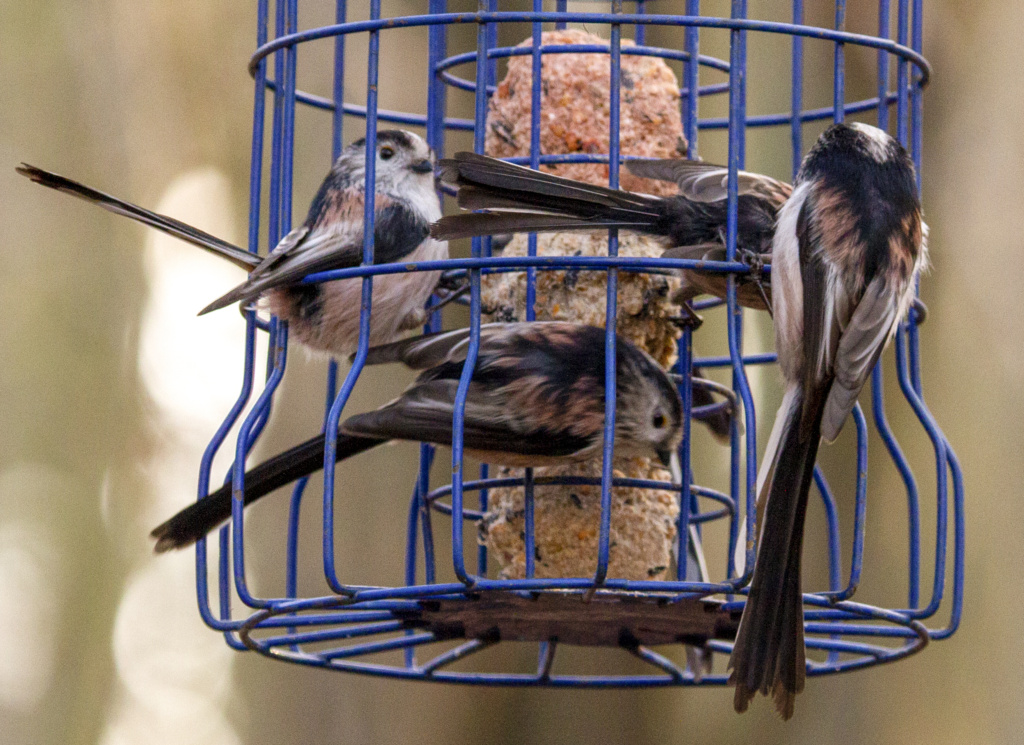Have you seen the bird of the month?
For March it is the: Long-tailed Tit (Aegithalos caudatus)

Where can I find them?
They are common and can be seen around most areas of the reserve, throughout the year.
They rarely stay still for more than a few seconds, flitting from branch to branch.
The best places to look and see them are around the Kitchen Garden, Terrace Area and at our two Bird Feeding Stations.
About the species
This species lives up to its name and can be easily recognised by its long tail. It is a small bird and can be seen in hedgerows, woodland, parks and gardens.
It has a black, white and pink back, a white head and a pale pink belly.
Despite their name, they are not closely related to the tit family (Blue Tit, Great Tit)
The species is on the UK green list, meaning its population is currently stable.
The Long-tailed Tit weighs around 9g (about half the weight of the Robin) and have an average lifespan of 2 years.
They are active feeders, hunting out insects and spiders among the small tree branches and hedgerows and can also be seen coming to feed on the fat balls at our two feeding stations.

In the winter, they form flocks and can be seen roaming searching for food. Due to their size they are vulnerable to the cold weather and harsh winters. They also huddle together at night to keep warm.
What do they sound like?
They make regular calls that sound like high pitch whistles, announcing their appearance. These can then be followed by a “ratty” sounding call. These vocalisations help them keep in touch with each other.
Where do they nest and what is the nest made from?
They can start to build a nest as early as February.
The Long-tailed Tit does not use a bird box. The nest is domed shaped, made from moss and normally built in a bush, fork of a tree or in bramble clumps. They camouflage it with cobwebs and lichen.
The inside of the nest is lined with hundreds of feathers to make it soft. The nest takes around three weeks to be built and completed.
On average six to eight eggs are normally laid and hatch after three weeks. The chicks will fledge after around two weeks in the nest.
Unlike other species, they maintain their sociability during the nesting period.

If you manage to spot and photograph a Long-tailed Tit, within the reserve, why not share it on our Facebook page?




